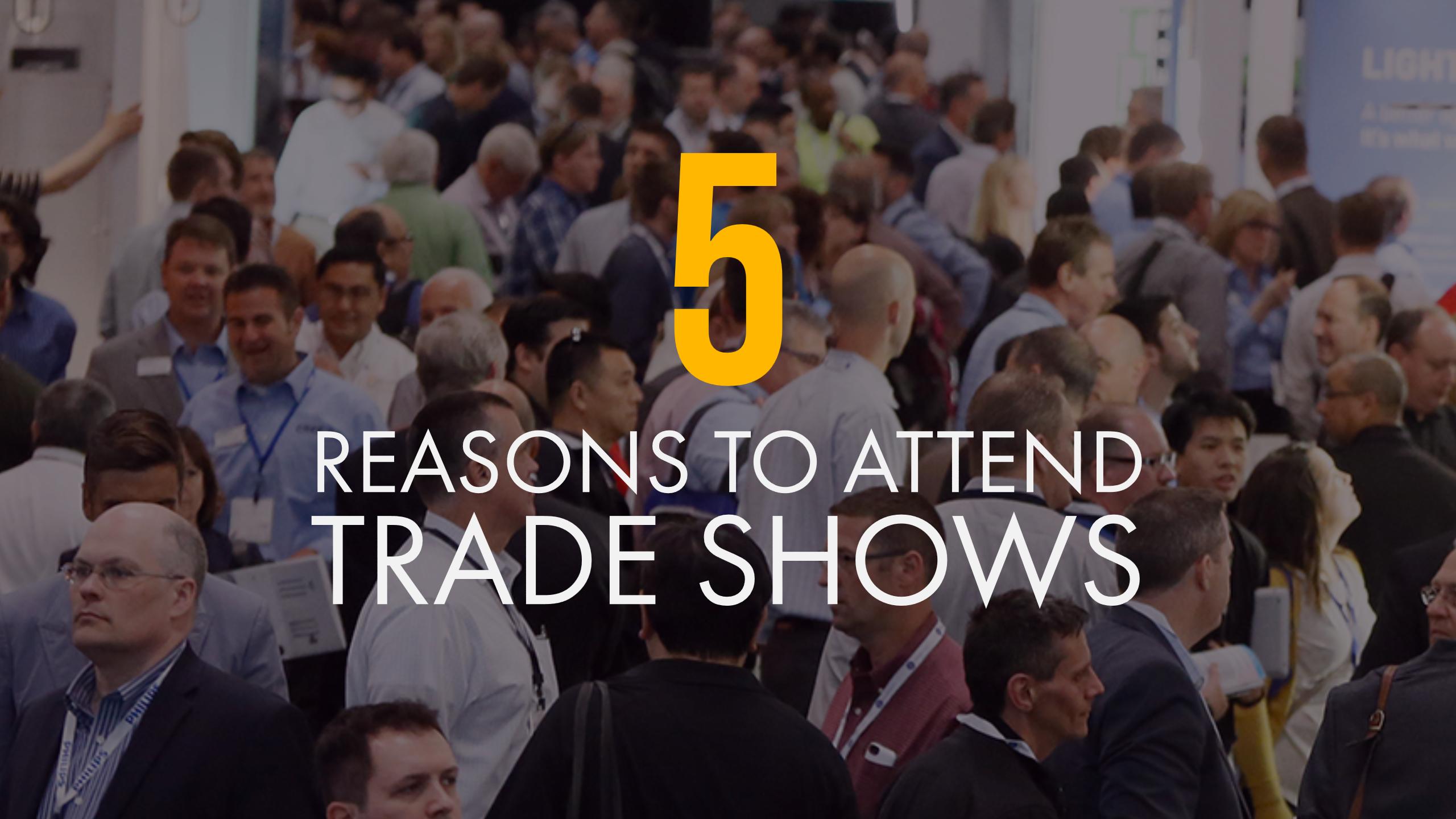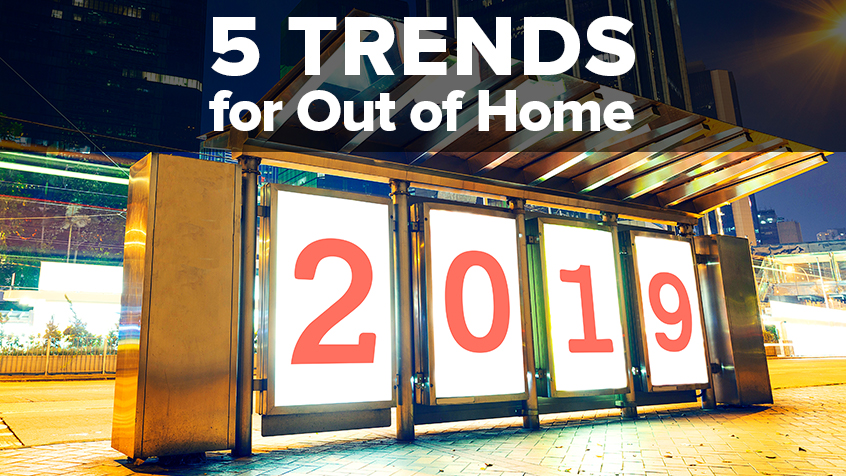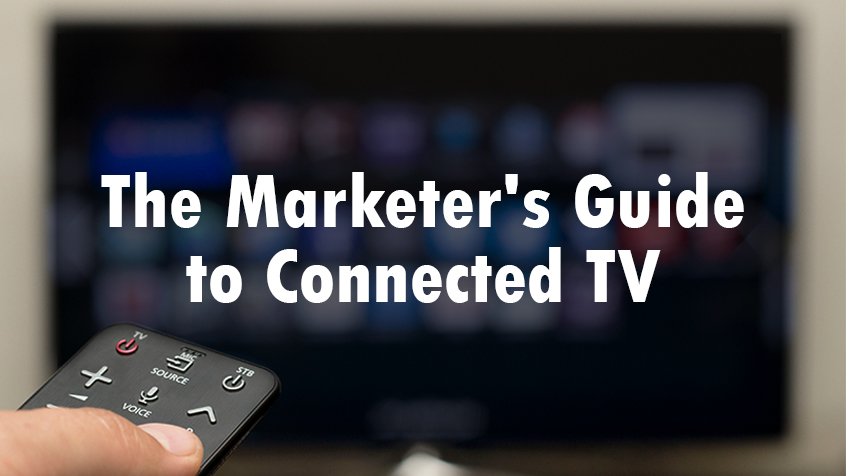Desktop, laptop, tablet, smartphone. Email, phone call, text, Skype, FaceTime, video-conferencing – with so many forms of digital communication at our fingertips 24/7, making clients just a tap away why is it that trade shows are not just surviving, but thriving in the connected age? There are currently 11,427 trade shows and conventions in the USA with over 107 million attendees at shows in the US, Canada and Mexico (2015 CEIR Exhibition Industry Census). There are various conferences and events to choose from with different industries being represented many times over. Is it worth the time and expense to head to the next big conference, convention or trade show for your industry or business? There are five crucial reasons for leaving the office behind and attending an event.
Digital Overload
We’ve all been there…cellphone, iPad, e-reader, laptop, a work phone or perhaps a desktop computer – all at once! Communication through technology sounds like a great idea, but sometimes navigating the right channel to make your best impression takes a backseat to modern technology.
Phones are great when they work, if you can avoid dropped calls, poor connections, battery life issues and more. Video conferencing is convenient but has its issues as well, connectivity and even joining a conference can be difficult and confusing. And let’s be honest – do you really remember many of the emails you get? But when 81% of audience members remember visiting an exhibitor’s booth (Statista, 2017), it becomes clear that the human connection is still more powerful and memorable. Simply put, phones and video conferencing don’t compare to the experience of attending a convention and sharing new experiences with other industry members.
Face-To-Face Connections
The ability to meet people face-to-face at the convention center during exhibit hours helps to build and shape lasting connections.
- 91% of attendees say that trade shows impact their buying decisions because the competition is in one place allowing for comparison shopping in real time (CEIR: The Spend Decision: Analyzing How Exhibits Fit Into The Overall Marketing Budget, 2016).
The benefits of attending a trade show or convention outweigh the drawbacks of travel and expense. Airline security, a cramped middle seat in coach, mobile phone roaming charges and spotty hotel Wi-Fi make travel neither easy nor fun. Yet, having a captive audience of thousands who all share the same professional interest is attractive for industry members. From an out of home marketing perspective, the specific audience presents many opportunities to highlight a product launch, encourage a directional message or promote corporate brand awareness. Arriving attendees will see airport advertising, transit opportunities, such as transit shelters, bus panels and rail media, and billboards as attendees head to a trade show or convention to meet face-to-face.
Key Purchasers in One Space
The target rich environment is a main attraction for exhibitors. 46% of trade show attendees are in Executive or Upper Management (CEIR: The Role and Value of Face to Face) and 81% of the trade show attendees have buying authority (CEIR: The Spend Decision: Analyzing How Exhibits Fit Into The Overall Marketing Budget, 2016). Having so many decision makers in one place is good for competition. Say 10,000 is the average attendance for a key B2B meeting, then 8 out of every 10 people have serious buying power. You can meet and mingle with decision makers from every nook and cranny of your industry. An outdoor campaign bolstering awareness of your brand in the convention, hotel and nightlife corridors is an impactful strategy delivering thousands of impressions to this crucial and beneficial audience.
Getting Ahead of the Competition
How much time would you have to spend to put yourself in front of 8,000 decision makers? A lot more time than you have, that’s for sure! The savviest exhibitors understand after a full day of exhibits the need to keep their branding message front and center, the need to stand out among competition and strive for the biggest impression. Trade shows should be looked at not just for the time attendees spend on the floor, but for the time they spend in-market which provides a much larger window of opportunity than just the exhibit hours. Mobile media, cutting edge experiential and guerilla marketing, and traditional outdoor media are seen as an extension of the exhibit, offering reach beyond the din of the show to key people on the move in the host city. Don’t let your competition make the biggest impression, when you have the opportunity to make a more substantial one.
Not Just a Convention Center, but a Lifestyle
Trade shows are thriving, and will continue to do so – not just because there is a demand by their attendee audience, but also because the host cities will continue to build out their infrastructure to enhance the experience for both organizations and attendees. There is tough competition among cities to host major business conventions to attract even more and larger conventions.
- “The largest convention centers in America by square footage based on Statista’s 2014 data are in the top three cities McCormick Place, Chicago at 2.6 million square feet; Orange County Convention Center, Orlando at 2.1 million square feet; and Las Vegas Convention Center, Las Vegas at 1.94 million square feet.”
- “Meetings and conventions are important revenue generators for cities, supporting not only the meeting venues and hotels, but also local restaurants, entertainment and numerous other businesses within the city,” said Bharet Malhotra, vice president of sales for theCvent Supplier Network,
The idea behind convention center expansion and building in cities like Washington DC, Philadelphia, Chicago, San Diego, Boston and Seattle is to bolster the local economy from exhibitors who would otherwise spend their money elsewhere or to help a city reverse neighborhood erosion. A thriving convention center helps drive hotel room occupancy, fills seats in restaurants and other nightlife entertainment outlets. Outdoor media such as a well-placed wallscape, a fleet of taxi tops, a showing level of street furniture posters or even a team of branded segways benefits the key exhibitors who want an effective solution ensuring that their branding messages stand out among the many exhibitors outside of exhibit hours.
The benefits of conventions from a city’s economic development and an exhibitor’s perspective in showcasing new developments to key decision makers outweighs being cordoned in an office with too many technological gadgets, 24/7/365. Using an outdoor solutions provider like EMC Outdoor can help to rethink your next convention strategy to reach arriving and circulating attendees with the right balance of outdoor media during the key dates of your next convention.
Contact Us:





